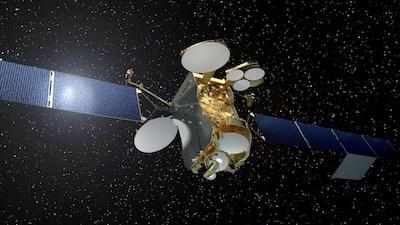Fully Electric Satellites Are Scheduled For Launch This Year
Airbus will mark new milestones next year with launches of innovative communications spacecraft that range from large, high-power relay platforms incorporating electric propulsion systems to compact, mass-produced units for a 900-satellite constellation providing affordable global internet access.

Starting off 2018 will be the orbiting of the Airbus-built SES-14 for Luxembourg-based telecommunications satellite operator SES, scheduled for launch on 25 January. The 4-metric-tonne weight category spacecraft is based on Airbus’ reliable Eurostar platform in the E3000e variant – which exclusively uses electric propulsion for raising its altitude to geostationary orbit above Earth.
The fully-electric system replaces chemical propulsion that satellites traditionally use to reach and maintain orbit after deployment by their launch vehicle. This technological revolution in propulsion has tangible benefits: with chemical propulsion, half of a satellite’s mass at lift-off is made up of the propellant; electric propulsion eliminates a considerable part of the mass, enabling satellites to be lighter in weight or carry significantly increased payloads.
Launches of Airbus fully-electric satellites
SES-14 will have a variety of missions to perform once in geostationary orbit, including cable television programming, video and data services in Latin America; capacity for aeronautical and maritime mobility applications; cellular backhaul; broadband delivery; and VSAT (Very Small Aperture Terminal) services for enterprise and government segments.
The upcoming launch of SES-14 follows the summer 2017 orbiting of the Airbus-produced Eutelsat 172B for French-based telecommunications satellite operator Eutelsat – which was the first high-power, fully-electric telecommunications satellite produced in Europe. The 3.5-tonne high-capacity satellite is now operational, delivering increased capacity for fast-growing applications in the Asia-Pacific region, including in-flight and maritime connectivity, cellular backhaul, corporate networks, video and government services.
On the other end of the satellite spectrum, 2018 will mark the first launch of OneWeb satellites to begin the creation of a 900-spacecraft constellation in low Earth orbit. OneWeb Satellites is a joint venture of Airbus and OneWeb – a global communications company whose mission is to provide affordable internet access to around the world.
Assembly line production for OneWeb satellites
Benefitting from Airbus’ industrial and space expertise, OneWeb satellites will be built on assembly lines incorporating state-of-the-art automation and test equipment to shorten the production time required.
In 2017, a 4,600-square metre facility was inaugurated at Toulouse, France (home to a major Airbus satellite production site), which will validate the methods necessary to manufacture OneWeb satellites at a scale never achieved before. This digital factory also will de-risk potential issues while laying the framework for the larger, multi-line OneWeb Satellites factory in the U.S. state of Florida.
When in full production, the satellites are to be orbited during one of the world’s largest launch campaigns, sending new satellites up every 21 days to provide affordable broadband access around the globe.
The experience gained with OneWeb’s mini-satellites also will bring new standards in cost and performance for others looking to benefit from affordable, capable satellites in applications covering everything from Earth observation to telecommunications.
(Image provided with Airbus news release)
 Bolen Gives Congress a Rare Thumbs-Up
Bolen Gives Congress a Rare Thumbs-Up The SportPlane Resource Guide RETURNS!!!!
The SportPlane Resource Guide RETURNS!!!! Buying Sprees Continue: Textron eAviation Takes On Amazilia Aerospace
Buying Sprees Continue: Textron eAviation Takes On Amazilia Aerospace Hawker 4000 Bizjets Gain Nav System, Data Link STC
Hawker 4000 Bizjets Gain Nav System, Data Link STC Echodyne Gets BVLOS Waiver for AiRanger Aircraft
Echodyne Gets BVLOS Waiver for AiRanger Aircraft



